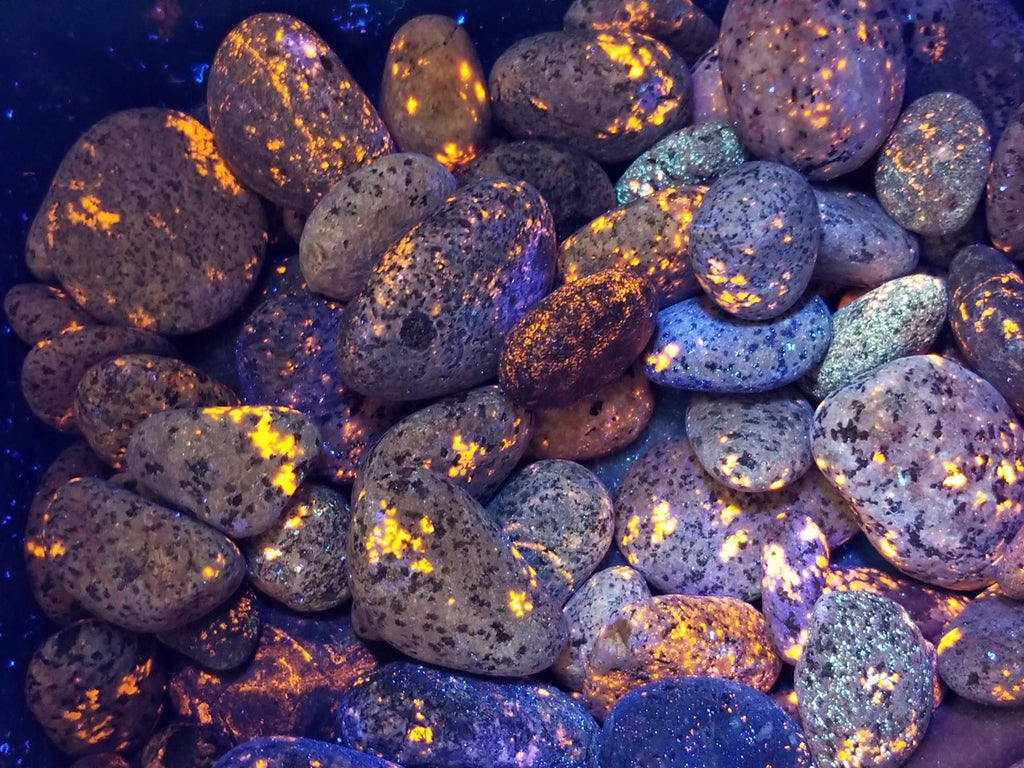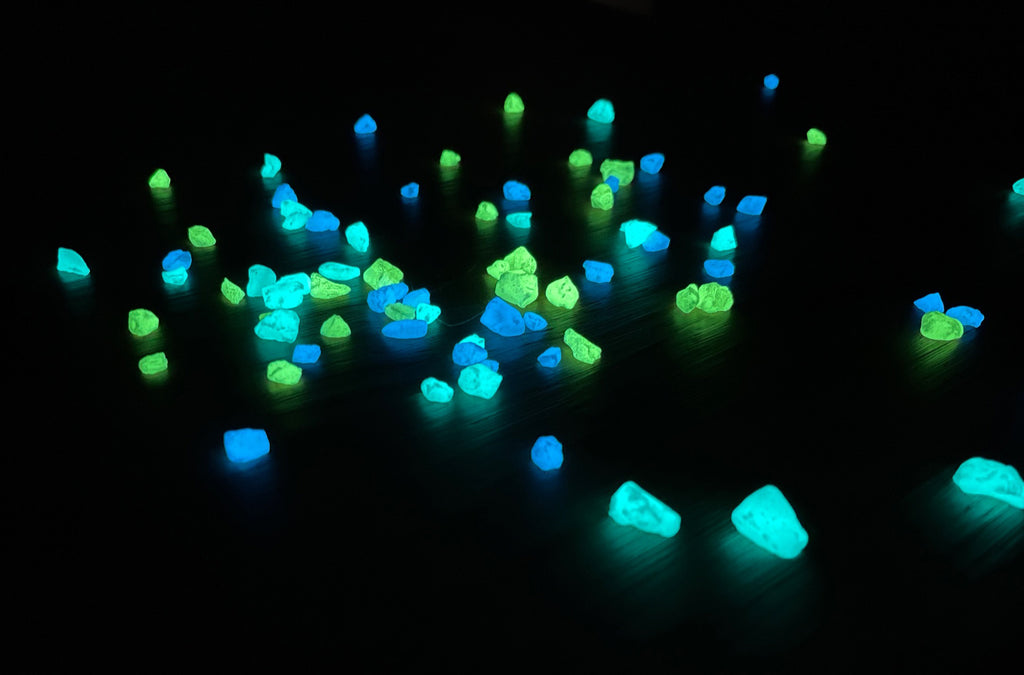Natural vs. Artificial Lighting (Yooperlite Stones & AGT™ Glow Aggregate)
Throughout history, humanity has been captivated by the wonder of light. From the comforting flicker of campfires to the dazzling brilliance of contemporary LED lights, our quest to illuminate our surroundings has been ongoing. In recent years, electricity free ambient lighting has become an important topic for the environment.
There are a few options for consumers to choose from but when it comes to natural vs artificial electricity free ambient lighting, two options are usually the focus, Yooperlites and artificial glow aggregate. In the following post, we’ll discuss the distinctions between these two ambient light sources, weighing the advantages and drawbacks of each, when it comes to deciding what kind of rock you want to illuminate your world!
Natural Glow Stones - Yooperlite Stones
What is a Yooperlite? Yooperlit stones are a unique and naturally occurring phenomenon, primarily found along the shores of Lake Superior in Michigan's Upper Peninsula. They are a type of rock, often resembling ordinary stones during the day but revealing a stunning luminescence under certain lighting conditions. Here are some key characteristics of Yooperlites:
- Origin: Yooperlites are a variety of sodalite-rich syenite, and their distinct glow comes from the presence of fluorescent minerals like sodalite and hackmanite. They formed over millions of years through geological processes.
- Glow Activation: To witness the mesmerizing glow of Yooperlites, you need a UV light source, typically a blacklight. Under UV light, Yooperlites emit a bright yellow or greenish-yellow glow.
Advantages of Yooperlites:
- Natural Beauty: Yooperlites are a testament to the beauty of nature. Their unique luminescence offers a sense of wonder and connection to the natural world.
- Geological Rarity: These stones are relatively rare and are primarily found in specific regions around Lake Superior, making them a coveted collector's item.
- Educational Value: Yooperlites serve as an excellent educational tool, sparking curiosity about geology and fluorescence in minerals.
Drawbacks of Yooperlites:
- Limited Glow Time: The luminescence of Yooperlites is temporary and fades quickly after the UV light source is removed.
- Restricted Availability: Yooperlites are only found in certain areas, making them inaccessible to many people who may want to experience their beauty.
- Fragile: Like many natural rocks, Yooperlites can be fragile and prone to damage.

Artificial Glow Stones - Glow Aggregate
On the other side of the spectrum, glow stones such as Ambient Glow Technology’s Ultra-X Glow stones offer a modern and versatile approach to ambient lighting. These artificial rocks are engineered to emit light in various colors and can be used in a wide range of applications. Here are some key features of AGT™ glow stone products:
- Manufacturing: Glow stone products are powered by photo-luminescent (glow) pigment otherwise known as Strontium Aluminate - a non-radioactive rare earth element. This means that all AGT™ glow products are non-toxic, last for 20+ years, are not affected by any weather conditions and can be easily applied to many designs and substrates.
- Glow Activation: Glow stones are designed to glow without the need for an external UV light source. They can be charged by exposure to natural or artificial light, such as a UV flashlight or the sun, and emit a soft, colorful glow in the dark for hours before needing another charge.
Advantages of Artificial Glow Stones
- Versatility: These products can be used in landscaping, interior design, art installations, and more. They offer flexibility in passive lighting design.
- Durability: Glow stones are designed to withstand various environmental conditions, making them suitable for both indoor and outdoor use.
- Extended Glow Time: Unlike Yooperlites, glow stones exhibit phosphorescence, which means they continue to glow after the light source is removed, thanks to energy stored in their molecular structure.
Drawbacks of Artificial Glow Stones
- Artificial Origin: Some may argue that the artificial nature of glow stones lacks the charm and natural beauty of Yooperlites.
- Initial Cost: High-quality glow stone products can be relatively expensive compared to collecting Yooperlites in their natural habitat.
- Energy Consumption: While they are more energy-efficient than traditional lighting, glow stone products do require an initial light source to charge them.

Fun Lighting Facts
- Bioluminescent Creatures: Various marine organisms, like the deep-sea anglerfish and certain jellyfish, use bioluminescence to attract prey or mates. Some even produce a beautiful natural light show in the depths of the ocean.
- Historical Significance: Ancient civilizations used various natural sources of ambient light, such as oil lamps, candles, and phosphorescent minerals, to illuminate their dwellings and artwork.
- Fireflies Communicate with Light: Fireflies, also known as lightning bugs, use their bioluminescent light to communicate with potential mates. Different species of fireflies have their own unique flashing patterns.
- Colors in Fireworks: Fireworks get their vibrant colors from different chemical compounds. For example, strontium compounds produce red, copper compounds create blue, and barium compounds yield green colors in fireworks.
In the debate between natural and artificial ambient light sources, both Yooperlites and Ambient Glow Technology's glow stones offer a variety of advantages and unique qualities. Yooperlites captivate us with their natural beauty and geological rarity, while glow stone products provide versatility and extended glow times. Ultimately, the choice between the two depends on personal preferences and the specific application!







